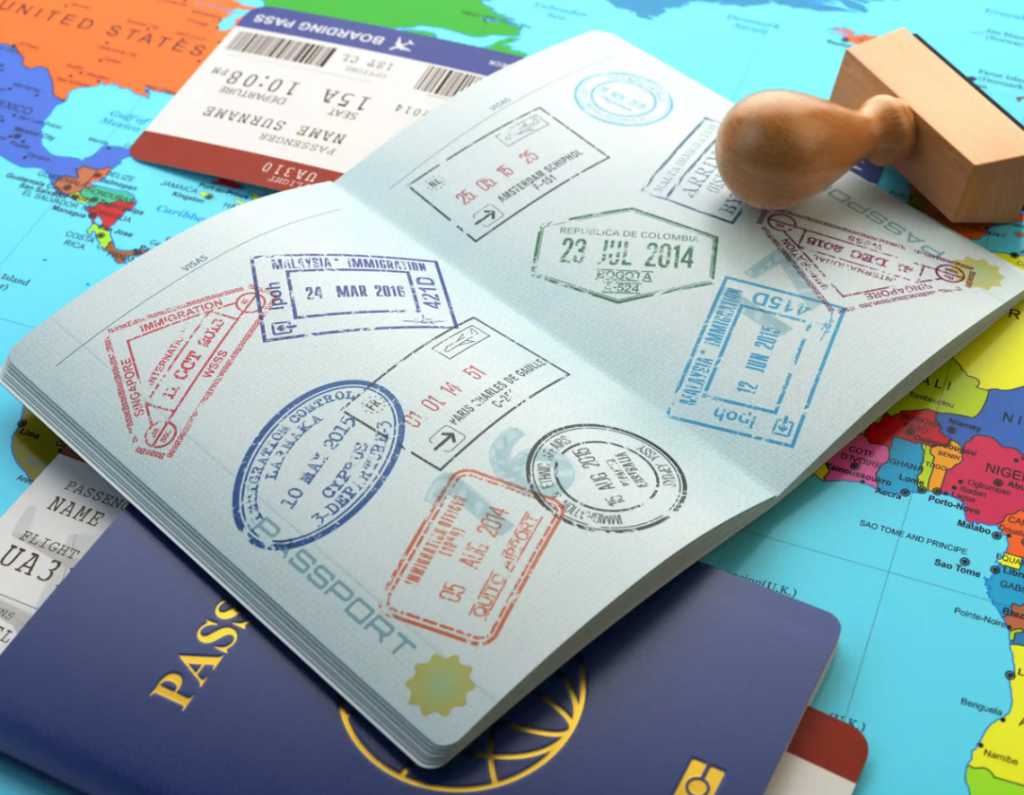Understanding Different Types of Visas and Their Purposes – Traveling abroad requires more than just a passport. A visa is an essential document that grants permission to enter, stay, or work in another country. Each visa type serves a different purpose depending on the traveler’s goal. Understanding the main categories helps ensure a smooth and lawful travel experience.

1. Tourist Visa
A tourist visa allows travelers to visit another country for leisure, vacation, or visiting family and friends. It is meant for short stays and typically does not permit employment or business activities. The duration varies from one nation to another, usually between 30 and 90 days. Tourist visas are ideal for individuals who wish to explore new cultures, enjoy historical sites, or relax on vacation.
For example, someone visiting Italy to see famous landmarks applies for a tourist visa. Applicants usually need proof of return tickets, accommodation, and financial stability to ensure they will not overstay.
2. Business Visa
A business visa is designed for professionals who travel abroad for work-related purposes without taking employment in that country. This includes attending meetings, conferences, or negotiating deals. It is different from a work visa because it does not allow paid work within the host nation. Many countries offer multiple-entry business visas for frequent travelers.
These visas are beneficial for entrepreneurs or executives who manage international partnerships. For instance, a manager attending regional meetings across Asia might hold a six-month multi-entry business visa.
3. Student Visa
A student visa allows international students to study at accredited educational institutions overseas. The visa often requires proof of acceptance from a school or university, financial capability, and sometimes medical clearance.
Students planning to pursue degrees in countries like the United States, Canada, or Australia must apply for this type. The U.S. F-1 visa, for example, is granted to full-time students enrolled in academic programs. Some student visas also permit limited part-time work, often on campus or in internships related to the field of study.
4. Work Visa
A work visa gives foreigners the legal right to work in another country. It generally requires a job offer from a company within the host nation. The employer often provides sponsorship by proving the position cannot easily be filled by local workers.
Different countries have different categories of work visas. The H-1B visa in the United States suits professionals in specialized fields like engineering or information technology. Meanwhile, Australia and Canada offer skilled worker visas that attract global professionals seeking long-term employment and residency opportunities.
5. Transit Visa
A transit visa is needed when a traveler passes through one country on the way to another destination. This visa is valid for a short period, usually less than a week. Not every traveler requires it, but some countries enforce it even for brief layovers.
For instance, if someone travels from Indonesia to France with a stop in Dubai, a transit visa may be necessary depending on the airline route and nationality. Understanding these rules helps avoid travel disruptions.
6. Immigrant Visa
An immigrant visa is issued to individuals who intend to live permanently in another country. It differs from temporary visas because it often leads to permanent residency and, in some cases, citizenship. Applicants usually need to meet strict requirements such as employment offers, family sponsorship, or investment criteria.
This type of visa is ideal for people seeking new opportunities or family reunification. Many countries, like the United States and Canada, have pathways that allow immigrants to apply for permanent residency after holding this visa.
Conclusion
Knowing the different types of visas and their purposes helps travelers make informed decisions. Each visa has its own conditions, validity, and application process. Choosing the correct one ensures compliance with immigration laws and prevents unnecessary problems during travel.
Whether it’s for tourism, business, study, or permanent relocation, understanding visa categories gives travelers the confidence to plan their journey properly and respect international regulations.
